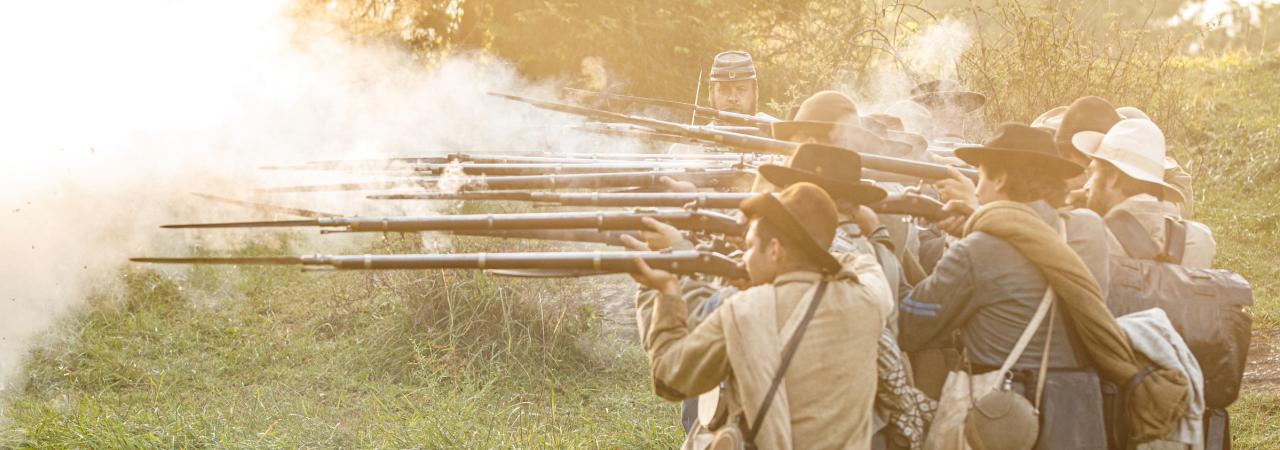
At the 160th Antietam event entitled "I Hear the Distant Thunder", reenactors from the Liberty Rifles (infantry) and the the First Section (artillery) participate in a number of battle vignettes.
... buried in the recesses of the rocks, I could only hear ... the incessant roar of small arms, the deadly hiss of Minnie balls, the shouts of the combatants, the booming of cannon, the explosion of shells, and the crash of their fragments on the rocks, all blended together in one dread chorus...
Colonel Perry, 44th Alabama, describing the fighting at Devil's Den during the Battle of Gettysburg. Library of Congress
Even though you may not have been around for a Civil War battle, it is still possible to re-create many of the sounds that a soldier would have experienced during battle and camp life, using this list.
Rebel Yell
The Rebel Yell is undoubtedly one of the most storied sounds of the Civil War. The ear-piercing, spirited shriek was designed to intimidate Union forces while steeling the resolve of the attacking Confederate troops.
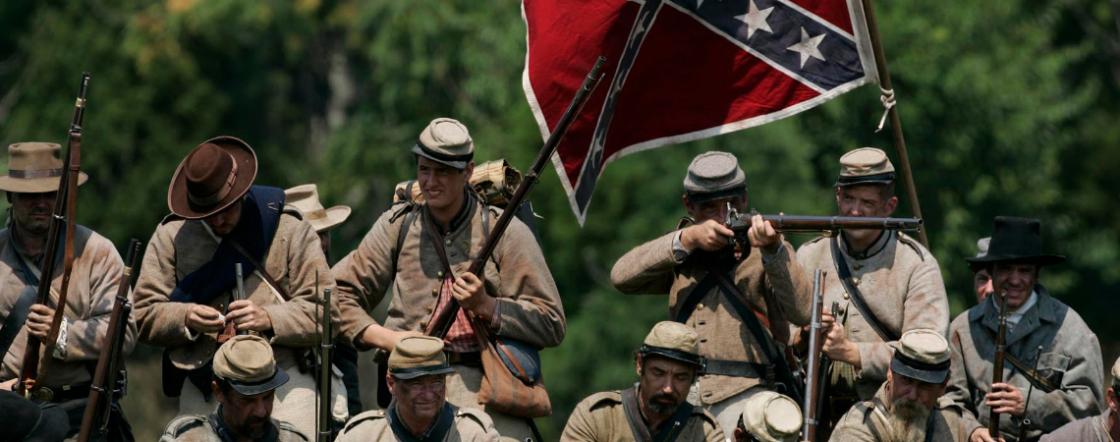
Hear it today: The Smithsonian features a video recording from the Library of Congress of Confederate veterans giving a rebel yell in the 1930s. After watching the video, try it out yourself - perhaps with a tour group on your next Civil War battlefield tour.
Cavalry Charge
The thunderous, churning roar generated by the charge of hundreds or thousands of cavalrymen storming across an open plain, such as in the Battle of Third Winchester, would have been an soul-shattering sound.
Hear it today: The modern military application of horses is all but obsolete due to the rapid evolution of military technology. However, one can still experience the sudden clamorous charge of hundreds of cavalrymen at Civil War reenactments.
Musket Fire
Perhaps the most iconic sound of the American Civil War was the sharp crack of an infantryman's rifle. The unforgettable shrill of a minie ball passing dangerously close over head and its shuddering thud against trees, earth, and bone characterize the inescapable brutality of the war.
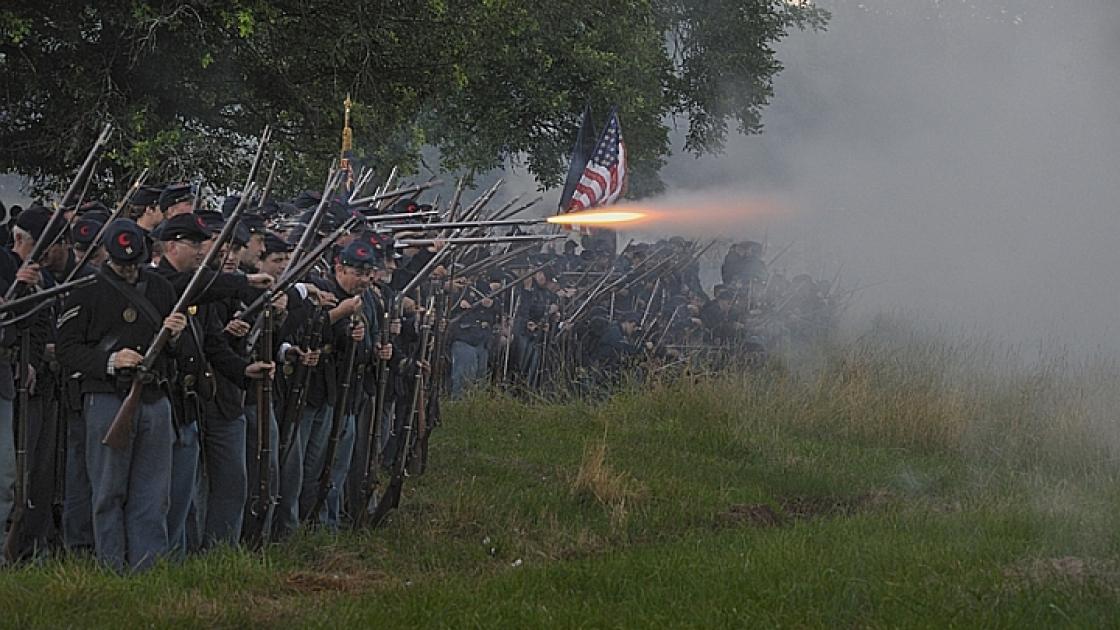
Hear it today: Dedicated Civil War re-enactors put on dozens of demonstrations throughout the country each year, and there are even societies that hold live firing competitions, such as the North-South Skirmish Association. Check them out next time a group gathers in your era for a truly unique Civil War experience, or, watch a video of the action here.
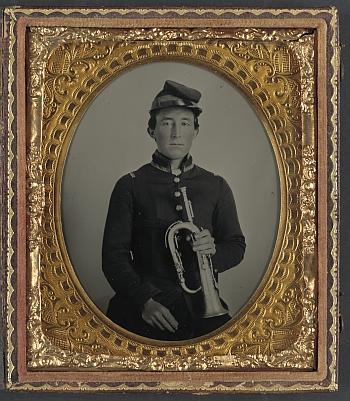
Bugle Call
Possessing the ability to rise above the deafening sounds of battle while also rousing exhausted soldiers from their sleep, the bugle call was an essential aspect of the Civil War. The bugle call determined when a solider woke up, went to bed, retreated, or charged.
Hear it today: Modern military reviews will undoubtedly feature a rendition of the hauntingly beautiful "Taps," which first originated during the American Civil War. To hear "Taps" and other bugle calls, visit a Civil War reenactment.
A March
The soldiers of the Civil War traversed thousands of miles of the American countryside, marching and countermarching in five separate theaters. The plodding thud of thousands of marching feet, the metallic pinging of coffee cups and utensils, and the low rumble of supply wagons could be heard for miles.
Hear it today: Today, a hiking expedition in nearly any area of the American countryside affords a chance to experience the land as the soldiers of the Civil War did - minus the pressure of looming battle, of course. As you walk, soak in the rustling leaves at Little Round Top, the softly rolling waters of Antietam Creek, and the mysterious noises of wilderness fauna. For an even more realistic experience, tie a tin can or some spoons to your belt loop or backpack to re-create the clinking sounds that soldiers' supplies would have made as they walked.
Campfire
Because of the constant movement the war demanded, soldiers spent long stretches of the war living and cooking their meals outdoors. The campfire was the central hub and gathering place an army camp. The warm, crisp crackle of a fire afforded warmth, a sense of security, and a melodious lullaby for the weary, worn-out soldiers.
Hear it today: Experience the comforting warmth and pleasing crackle of a campfire yourself! If your home doesn't have a fireplace or fire pit, try constructing your own campfire in a designated spot at a nearby campsite. (Follow all federal, state, and local regulations regarding campfires.)
Music
The Civil War was fought not only on the battlefield, but also in the realm of culture, as many timeless songs were written and adopted by both the Union and Confederacy. Soldiers' tunes elicited heartfelt sorrow, homesickness, and pride, with Dixie, Tramp, Tramp, Tramp, and Tenting Tonight remaining as American war classics.
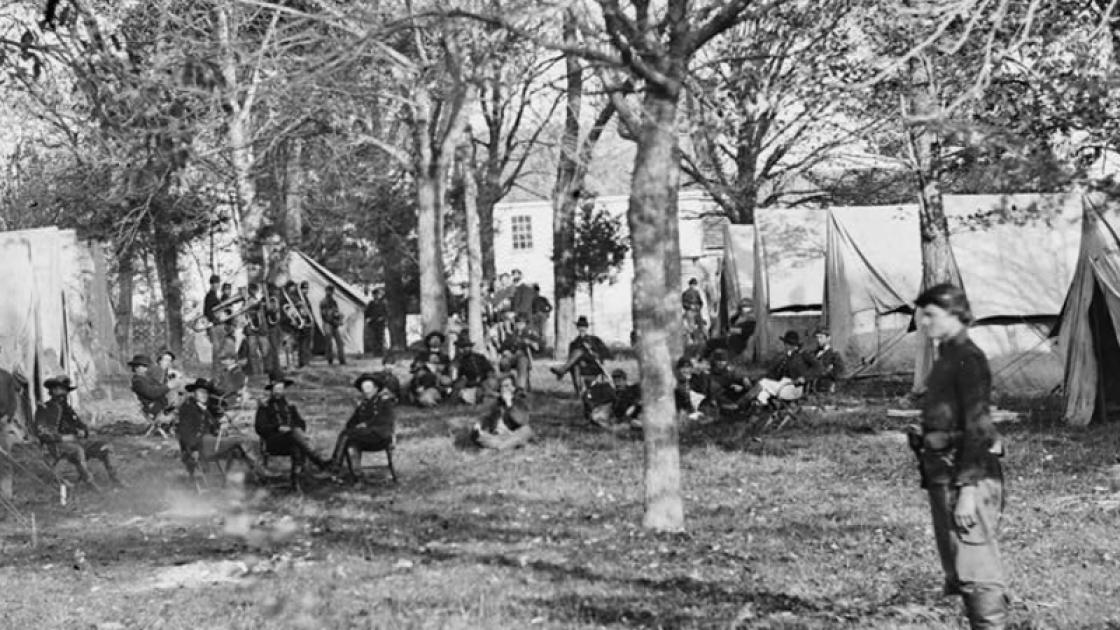
Hear it today: Learn about the history and lyrics of popular soldier and civilian songs from the Civil War on the Trust's page on Civil War Music. The collection includes multiple links that allow you to listen to modern-day recordings of these popular tunes.


